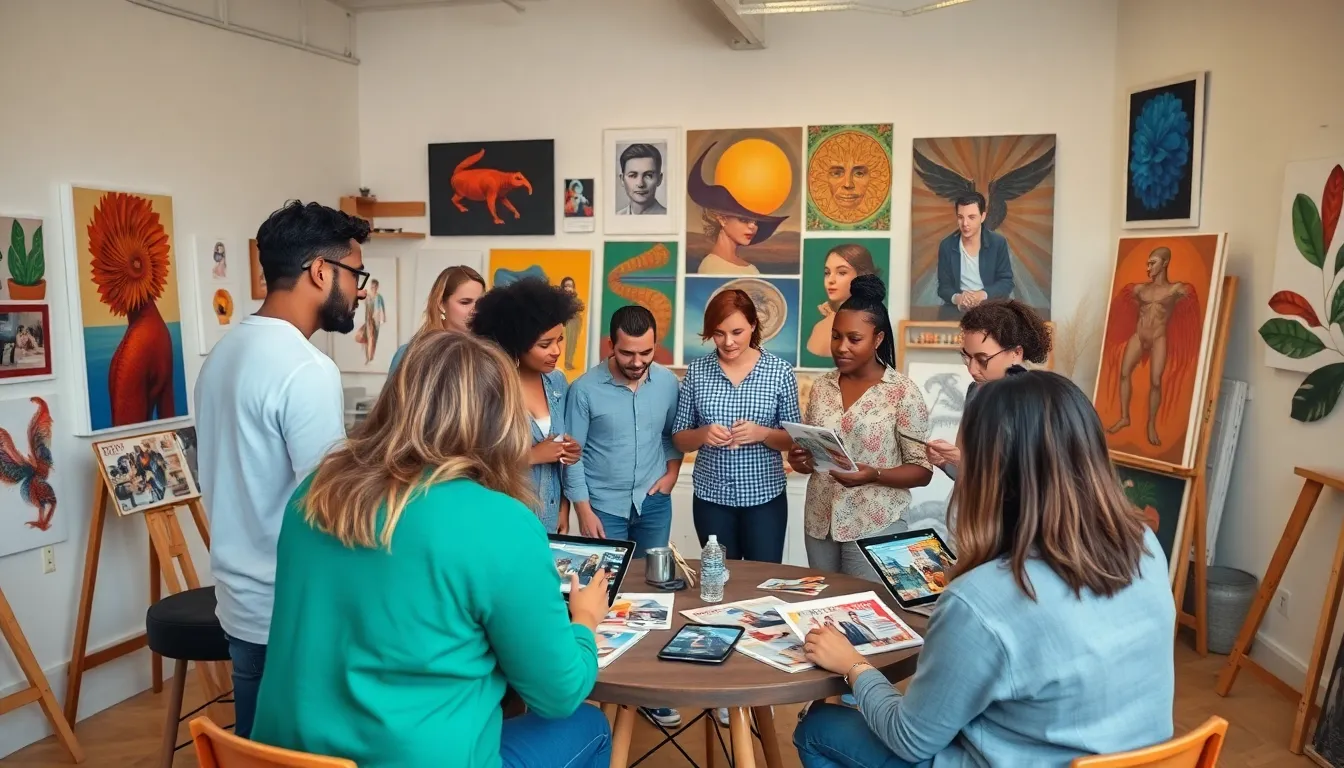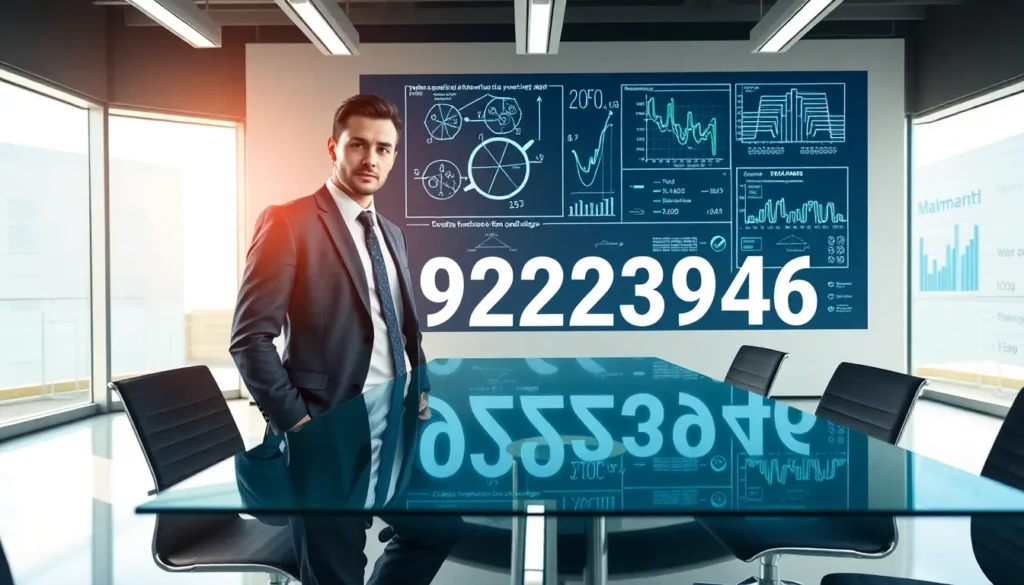Table of Contents
ToggleIn a world where creativity knows no bounds, <a href="https://wealthgeniuspath.com/lessons-in-leadership“>artistic magazines serve as vibrant platforms for expression and innovation. They not only showcase the works of talented artists but also explore diverse concepts that push the boundaries of traditional media. From avant-garde photography to experimental design, these magazines capture the essence of contemporary art and culture.
As readers flip through the pages, they encounter a rich tapestry of ideas that inspire and provoke thought. Each issue invites them to delve deeper into the artistic process, revealing the stories behind the works and the minds that create them. By embracing unique themes and concepts, artistic magazines foster a community where creativity thrives and new perspectives emerge.
Overview of Artistic Magazine Concepts
Artistic magazine concepts encompass various themes and formats that reflect creativity and innovation within the arts. These publications serve as vital connections between artists and audiences, showcasing diverse mediums and artistic expressions.
1. Thematic Exploration
Thematic exploration in artistic magazines highlights specific topics or ideas. For example, issues may focus on social justice, environmentalism, or identity politics. Each theme provides a framework for artists to present their work within a broader context.
2. Artist Features
Artist features offer in-depth profiles of individual creatives. Articles often include interviews, process discussions, and imagery of their work. This approach not only showcases talent but also provides insights into the artists’ inspirations and techniques.
3. Visual Storytelling
Visual storytelling employs images to convey narratives. Artistic magazines often utilize striking visuals to engage readers emotionally. Photographs, illustrations, and design elements serve as powerful tools to enhance the creative message.
4. Reviews and Critiques
Reviews and critiques analyze exhibitions, performances, and artistic works. These sections provide critical perspectives that help readers navigate the art world. Constructive feedback encourages dialogue around artistic quality and intent.
5. Community Engagement
Community engagement facilitates interaction between artists and their audiences. Many magazines include submission opportunities, artist interviews, and event listings. This involvement fosters a sense of belonging among readers and encourages participation in the arts.
6. Experimentation with Formats
Experimentation with formats allows artistic magazines to push boundaries. Some publications blend print and digital media, while others explore augmented reality or interactive content. This diversity keeps the reading experience fresh and immersive.
Artistic magazine concepts reflect a vibrant interplay of ideas, styles, and formats that stimulate conversation and understanding in the art community.
Emerging Trends in Artistic Magazines

Artistic magazines are evolving to adapt to changing audiences and technologies. Key trends include the balance between digital and print formats and the rise of interactive content.
Digital vs. Print
Digital formats dominate the artistic magazine landscape. They offer instant accessibility to global audiences. Artists can use multimedia components to enhance storytelling. Print magazines remain relevant, providing tactile experiences and aesthetic appeal. Many publications blend both formats, creating hybrid models that cater to diverse preferences. Data shows that 60% of readers prefer digital content for its convenience, while 40% value print for its tangible quality.
Interactive Content
Interactive content engages readers at deeper levels. Features like augmented reality (AR) and immersive layouts invite participation. Surveys indicate that interactive elements increase viewer retention rates by up to 70%. Readers enjoy features like polls, quizzes, and community contributions, fostering a sense of belonging. Integrating social media connections enhances reach and interaction, allowing artists to cultivate relationships with their audiences through real-time feedback and collaboration.
Iconic Artistic Magazines
Artistic magazines serve as significant cultural documents, reflecting both historical and contemporary artistic expressions. They showcase pioneering works, influence trends, and connect creators with wider audiences.
Historical Perspectives
Iconic artistic magazines emerged in the late 19th and early 20th centuries, shaping cultural discourse. Publications like Art Forum, established in 1962, focused on modern art trends, while The Studio began in 1893 and emphasized showcasing contemporary artists. Dada, a pivotal magazine from the Dada movement, provided a voice for avant-garde artists, challenging traditional artistic norms. These magazines chronicled movements such as Surrealism and Abstract Expressionism, playing crucial roles in art history.
Modern Influences
Modern artistic magazines reflect the diverse landscape of current artistic practices. Publications like Juxtapoz and Hi-Fructose highlight street art and contemporary culture, defining emerging styles and subcultures. Influential platforms such as Designboom and It’s Nice That merge design, art, and technology, showcasing innovative creators. This shift emphasizes accessibility, celebrating varied mediums, from digital art to installation, revealing how artistic magazines adapt to cultural changes and audience demands. These platforms not only promote artists but also provoke discussions on social and political issues, connecting art to everyday life.
The Role of Visual Design
Visual design plays a critical role in artistic magazines by enhancing aesthetic appeal and engaging readers. Visual elements—like typography, layout, and imagery—contribute significantly to the overall reading experience.
Typography
Typography influences readability and evokes emotions. Selected fonts convey the magazine’s personality, impacting how content is perceived. For instance, bold sans-serif fonts often suggest modernity and clarity, while serif fonts can evoke a sense of tradition and sophistication.
Layout
Layout dictates the flow of content and guides reader interaction. Strategic placement of text and images creates a visually dynamic experience. Grids and white space help manage visual overload, allowing readers to navigate easily. Effective layouts enhance storytelling by positioning visuals alongside relevant narratives.
Imagery
Imagery captivates and enhances communication. High-quality photographs and illustrations create an immediate connection with readers. Cover images often serve as a dominant visual element, attracting attention and summarizing the magazine’s theme. Thoughtful use of visuals contextualizes stories, illustrating complex ideas succinctly.
Color Schemes
Color schemes influence mood and identity. Carefully chosen palettes unify a magazine’s design, impacting how audiences engage with the content. For example, vibrant colors may energize, while muted tones can evoke contemplation. Consistent color use throughout editions establishes a recognizable brand identity.
Interactive Elements
Interactive design elements, such as QR codes and augmented reality features, increase reader engagement. These additions create immersive experiences, linking physical and digital realms. Interactive components invite deeper exploration, making the content more compelling and memorable.
Visual Consistency
Visual consistency fosters familiarity and trust. Adhering to established design standards across issues builds a cohesive identity. This includes maintaining consistent style guides for imagery, typography, and layout, which reinforces brand recognition among readers.
Visual design shapes how artistic magazines communicate ideas, creating connections and enhancing engagement. Through intentional design choices, these publications resonate with audiences, stimulating interest and dialogue within the art community.
Contribution to the Art Community
Artistic magazines serve as crucial platforms within the art community, promoting innovation and encouraging collaboration among artists, writers, and audiences. These publications contribute in several distinct ways:
- Showcasing Artists: Artistic magazines highlight the work of both emerging and established artists, providing them with visibility. This platform enables artists to reach wider audiences and enhances their careers.
- Cultivating Dialogue: Through features and interviews, these magazines foster conversations between artists and art enthusiasts. They create a space for shared ideas, enabling deeper connections and community support.
- Challenging Narratives: Many artistic magazines tackle pressing social issues, encouraging readers to engage with themes such as identity, culture, and activism. By addressing contemporary topics, these publications stimulate critical thought within the community.
- Encouraging Experimentation: Artistic magazines often experiment with formats and mediums, pushing the boundaries of traditional publishing. This innovation inspires artists to explore new methodologies and techniques in their work.
- Facilitating Networking: These magazines serve as networking hubs, linking artists with potential collaborators, curators, and galleries. This connectivity opens opportunities for exhibitions and projects, enhancing the overall art ecosystem.
Artistic magazines not only document the evolution of artistic expression but also serve as catalysts for change within the art community. By fostering creativity, encouraging dialogue, and advocating for diversity, they play an essential role in shaping the cultural landscape.
Artistic magazines stand as vital conduits for creativity and dialogue in the ever-evolving art landscape. They not only showcase diverse talents but also engage readers through innovative formats and immersive experiences. By addressing contemporary issues and fostering connections between artists and audiences, these publications play a crucial role in shaping cultural discourse.
As they continue to adapt to technological advancements and audience preferences, artistic magazines will remain essential in promoting artistic expression and collaboration. Their ability to blend traditional and modern approaches ensures they’ll thrive in a dynamic environment, inspiring future generations of creatives and art enthusiasts alike.




